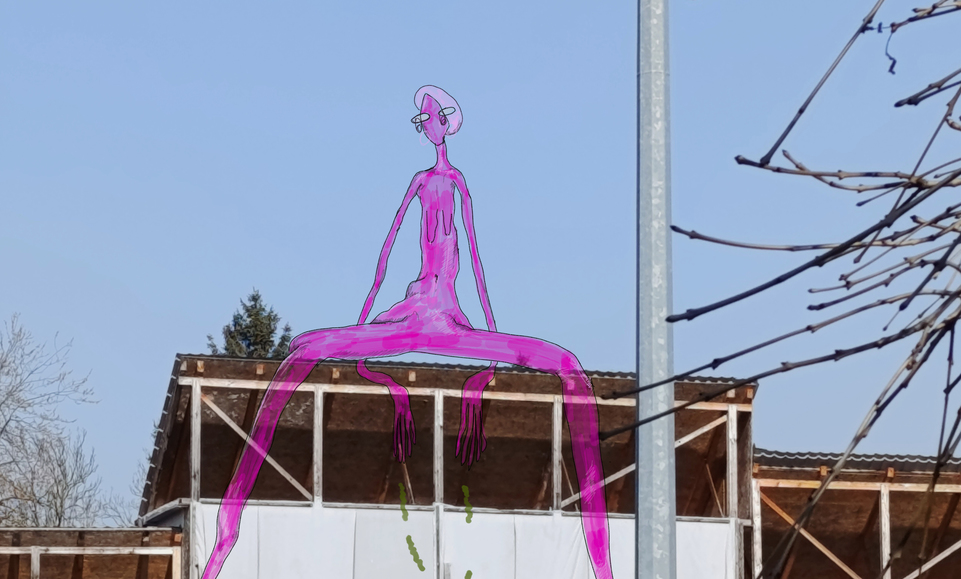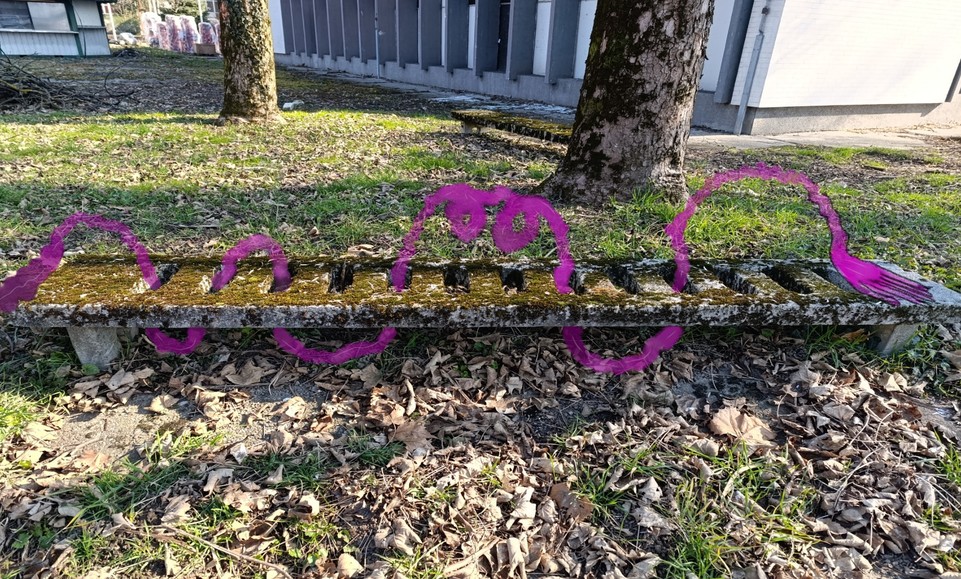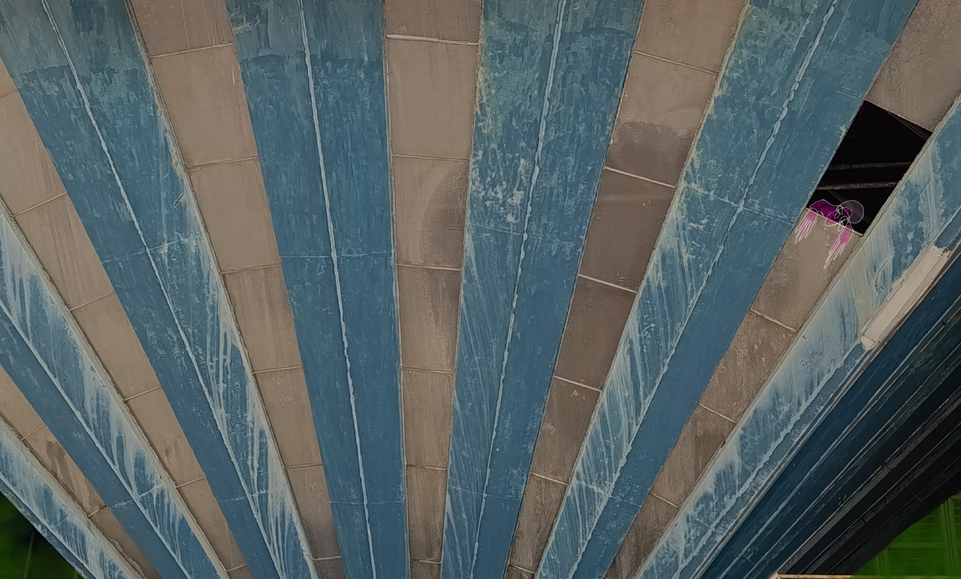I don’t like the cold. Maybe it’s because I’m sensitive or because my body reacts to it in ways I don’t enjoy—red cheeks, a runny nose, difficulty breathing. I have to keep my mouth shut because if I talk, the cold sneaks into my lungs. But here I am, in a city I barely know in winter, stepping into a five-week residency. I was in Zagreb once before, two years ago, for three days. Just enough to say I had been here, but not enough to understand its rhythm. This time, it’s different. I’m not a tourist—I have to find my way, build routines, and learn how to communicate with the city. The first week in a new city is always disorienting and then I spent the second half of the week sick, my body fighting the cold and flu. That time of reflection and rest came differently than expected, but I tried to listen to what my body was saying.
In my art practice, space is important to my work. I enjoy engaging with it, adapting to it, and letting it shape me as much as I shape it. That’s why, in the first week, I was eager to explore the cultural spaces of Zagreb. We started at Pogon and Močvara, and immediately, I felt something interesting in their structure. At Pogon, we met with its director, Janja Sesar, who explained how the space operates. What struck me was its model of collaboration—a direct partnership between the city, Pogon, and a coalition of independent organizations. In many cities, maintaining independent spaces is a struggle, constantly at risk due to financial instability, bureaucracy, or shifting priorities. Yet here, there was an example of how public-private cooperation could sustain an alternative scene. It made me wonder—how could something similar work elsewhere? Močvara, on the other hand, had a different kind of energy, grassroots organizing, and self-managed artistic initiatives. It’s these models that interest me the most. How do people make art sustainable outside institutions? How do they create long-lasting, independent spaces while still keeping them alive and relevant after years of functioning?
Later, we walked through Klaonica with Saša Šimpraga. The former city slaughterhouse and livestock market, now an abandoned complex, immediately posed a challenge: where do you even start with a space this massive? Some sections were already repurposed, storage spaces, parking areas, but so much of it remained untouched. Spaces like these have unlimited potential: studios, workshops, production spaces, galleries, and community hubs. But they also demand huge investments, and that raises the biggest question—sustainability. Renovation is expensive. Maintenance is expensive. And in the absence of long-term vision and support, many of these places remain in limbo, stuck in a cycle of neglect and temporary usage.
Similarly, at Zagrebački Velesajam, during our walk with Sonja Leboš & Lana Lovrenčić, focused on the geopolitical and architectural history of the space. For me, some buildings, like the Italian Pavilion with its inverted pyramids, were breathtaking. Others, like the former Nova TV space as explained by Sonja and Lana, resonated with me differently. I could see my digital figures interacting with them, merging with their structures in front. Maybe it’s because I always see bodies as something that exists in a constant state of expansion both in space and in imagination. So what I can do for now is imagine bodies interacting digitally in these spaces. And then there were these concrete-block benches, overtaken by greenery, structures built decades ago but still functioning, existing, blending into their environment. Just like spaces that shift, they adapt, they form new meanings.
One theme that kept coming up in our discussions was temporality. Not just what a space is, but what it could be, and for how long. How can we work with the shifting nature of spaces rather than forcing permanence? If a complex is too large to be fully transformed, why not use parts of it temporarily, creating adaptive, evolving spaces instead of waiting for perfect conditions? This is something I think about often. Coming from Prishtina, where finding and maintaining a studio is a constant challenge, I relate deeply to the struggle of independent artists trying to carve out sustainable spaces. In Zagreb, I hear the same concerns: “There aren’t enough art and cultural spaces.” The reality is, that these struggles aren’t isolated, but exist across cities, across artistic communities.
But still, I wonder: how do you take inspiration from these spaces and turn it into action? How these models that I am learning about can be adapted, that these need to change for independent artistic spaces to be not just temporary solutions, but long-term infrastructures. The semi-curated program has helped ground me in the scene, offering conversations and perspectives that challenge and expand my understanding of artistic sustainability. I feel like the least familiar with Zagreb out of all the residents here, but that unfamiliarity also keeps me open to learning, observing, and absorbing.
One of my wishes is that in the future to create an independent art and cultural space in Prishtina, a place for workshops, exhibitions, and collective practices. So for now, I listen. I reflect. I learn from the models here, how they function, how they struggle, how they survive. I keep thinking about how independent spaces are constantly being made and remade. Maybe sustainability isn’t about permanence, but about adaptation, about knowing how to move with the space.



